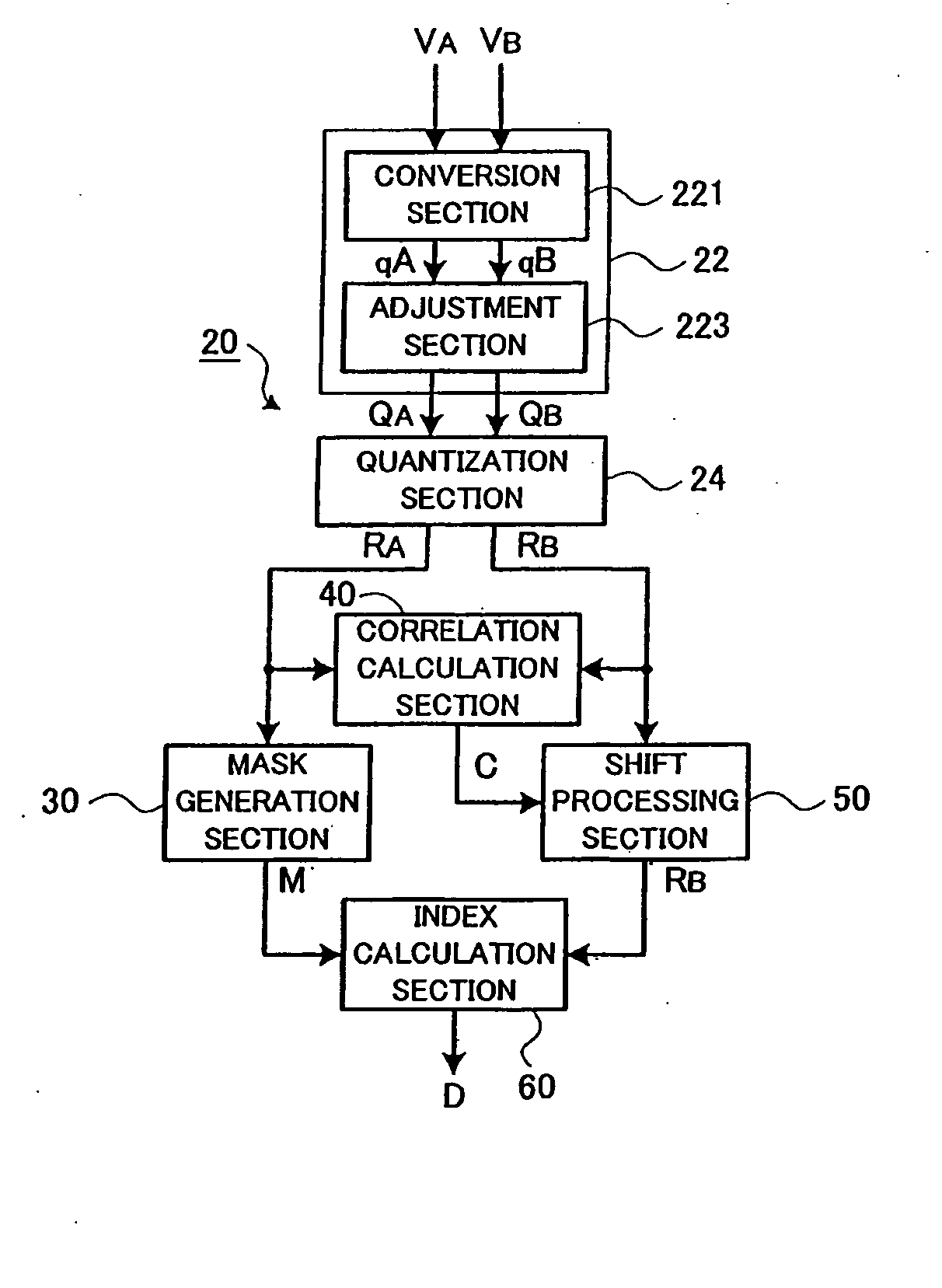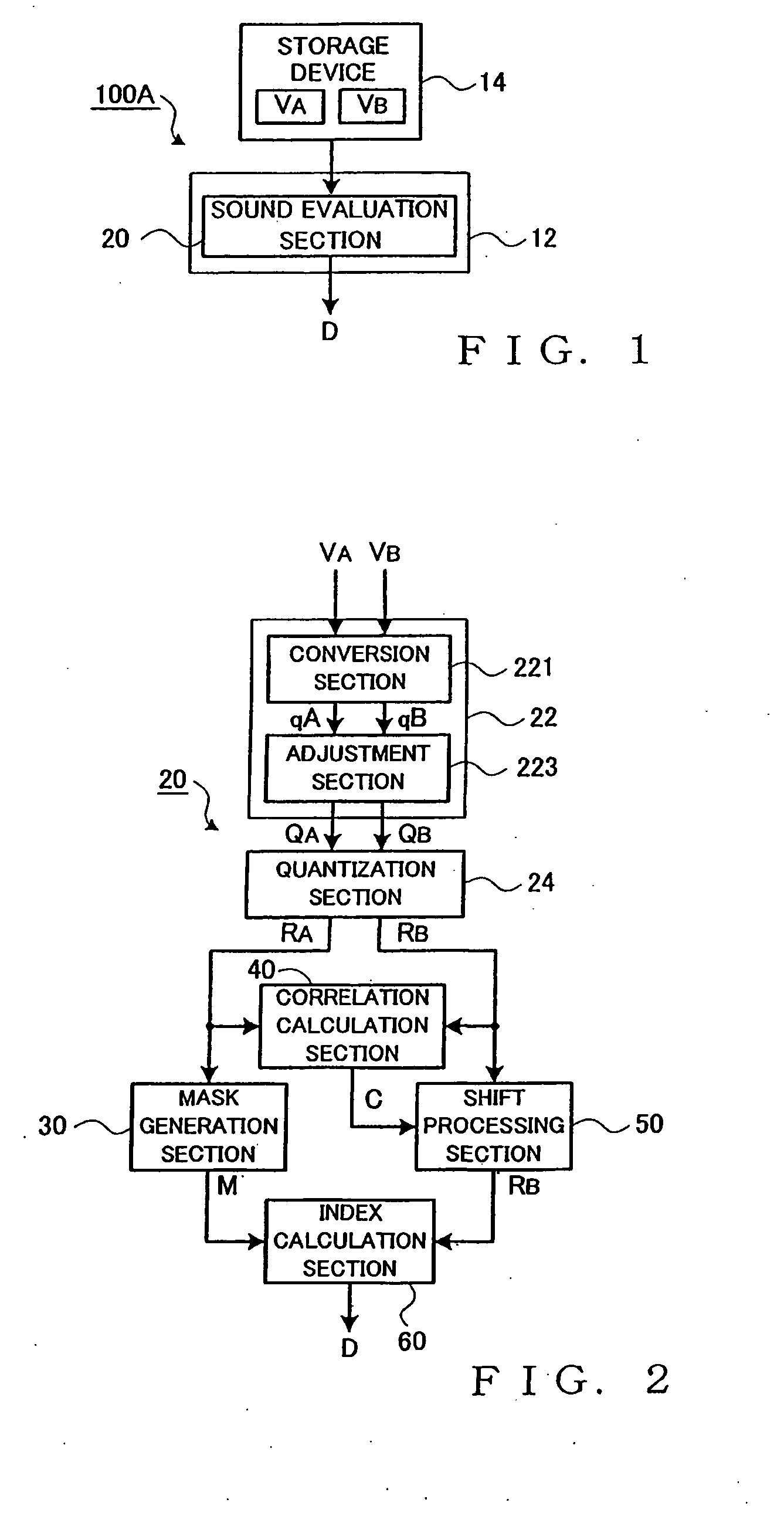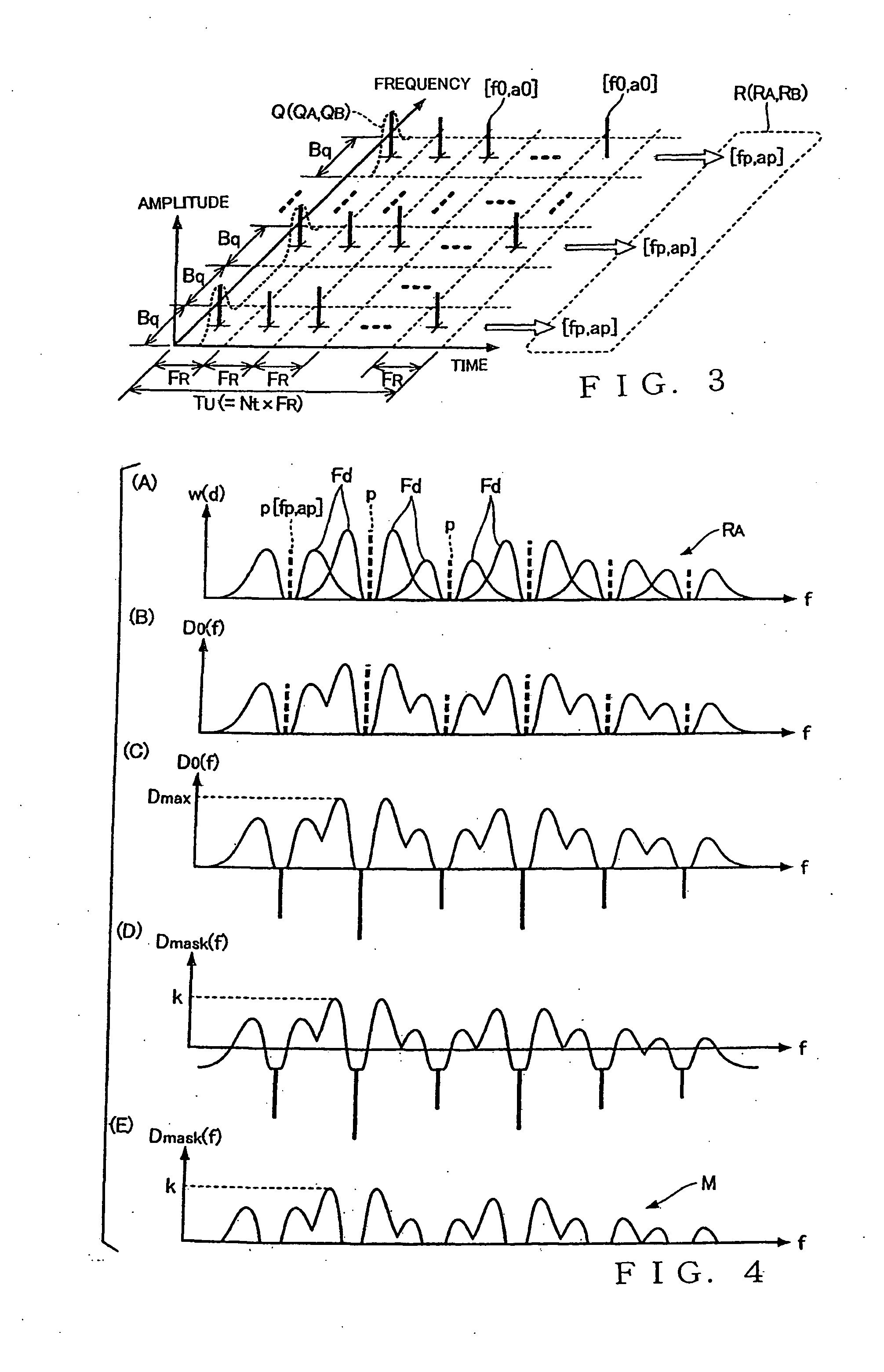Sound Processing apparatus and method
a sound processing and sound technology, applied in the field of sound processing apparatus and method, can solve the problems of inability to evaluate the degree of consonance or dissonance between the two sounds, and the problem of evaluating other sounds than singing sounds, such as tones performed by musical instruments, to achieve the effect of high accuracy
- Summary
- Abstract
- Description
- Claims
- Application Information
AI Technical Summary
Benefits of technology
Problems solved by technology
Method used
Image
Examples
first embodiment
[0034]FIG. 1 is a block diagram of a first embodiment of a sound processing apparatus of the present invention. As shown, the sound processing apparatus 100A is implemented by a computer comprising an arithmetic operation processing device 12 and a storage device 14. The arithmetic operation processing device 12 performs a particular function (sound evaluation section 20) by executing a program. The storage device 14 stores therein programs to be executed by the arithmetic operation processing device 12, and data to be used by the arithmetic operation processing device 12.
[0035]As shown in FIG. 1, the storage device 14 stores therein a plurality of sounds V (VA, VB). Each of the voices is stored in the storage device 14 in the form of digital data indicative of a waveform of the time domain. Each of the sounds V is a singing sound or performance tone of a musical instrument in a characteristic portion (e.g., two to four measures) of a music piece. However, sounds V having a harmonic...
second embodiment
[0067]The following describe a second embodiment of the sound processing apparatus of the present invention. In the following description about the second embodiment, the same elements as in the first embodiment are indicated by the same reference numerals and characters and will not be described here to avoid unnecessary duplication.
[0068]FIG. 14 is a block diagram of the second embodiment of the sound processing apparatus 100B of the present invention. As shown, the arithmetic operation processing device 12 functions as the sound evaluation section 20 and a tone pitch adjustment section 70. The sound evaluation section 20 in the second embodiment is generally similar to the sound evaluation section 20 in the first embodiment (FIG. 2), except that the index calculation section 60 in the second embodiment calculates a consonance index value D when each spectral trajectory RB, having been subjected to the process by the shift processing section 50, has been shifted on the frequency a...
third embodiment
[0070]FIG. 15 is a block diagram of a third embodiment of the sound processing apparatus 100C of the present invention. As shown, a plurality of evaluated sounds VB, which present waveforms of different sounds, are stored in the storage device 14. The sound evaluation section 20 in the third embodiment calculates consonant index values D individually for each of the plurality of evaluated sounds VB in generally the same manner as in the above-described first embodiment.
[0071]The sound evaluation section 20 selects an evaluated sound VB of which the calculated consonant index values D are minimal (i.e., which is most consonant with a target sound VA) from among the plurality of evaluated sounds VB stored in the storage device 14. Namely, in the third embodiment, it is possible to extract, from among the plurality of evaluated sounds VB, an evaluated sound VB sufficiently auditorily consonant with the target sound VA. Such an evaluated sound VB identified by the sound evaluation secti...
PUM
 Login to View More
Login to View More Abstract
Description
Claims
Application Information
 Login to View More
Login to View More - R&D
- Intellectual Property
- Life Sciences
- Materials
- Tech Scout
- Unparalleled Data Quality
- Higher Quality Content
- 60% Fewer Hallucinations
Browse by: Latest US Patents, China's latest patents, Technical Efficacy Thesaurus, Application Domain, Technology Topic, Popular Technical Reports.
© 2025 PatSnap. All rights reserved.Legal|Privacy policy|Modern Slavery Act Transparency Statement|Sitemap|About US| Contact US: help@patsnap.com



